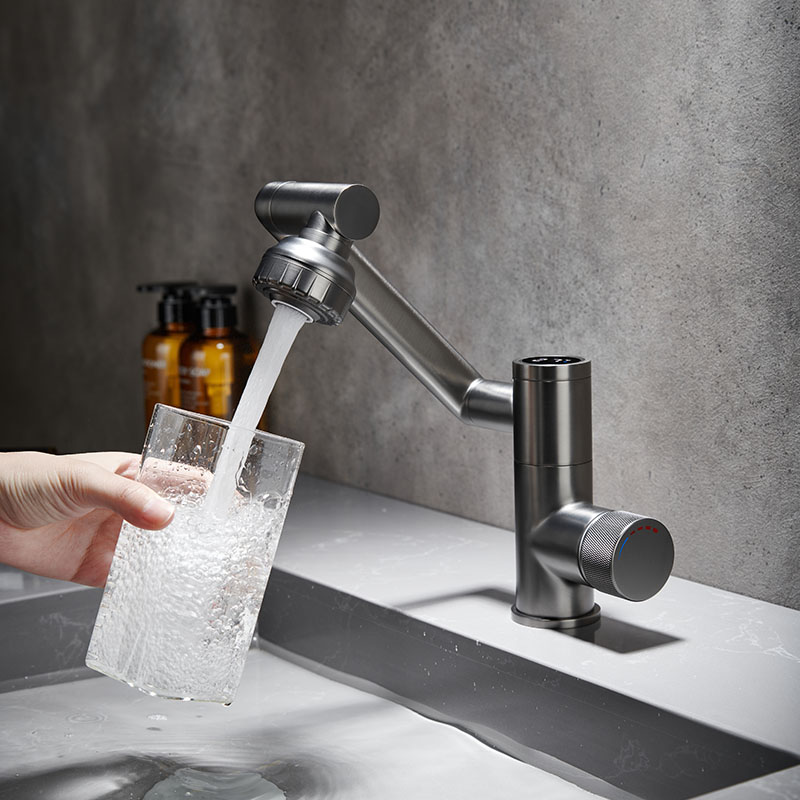Trends And Brand Differentiation Strategies in Bathroom Product Appearance Design
Driven by consumption upgrades and the rise of personalized needs, the appearance design of bathroom products has shifted from functional orientation to the dual competitive dimensions of "aesthetic expression" and "emotional resonance". The precise capture of design trends and the deep integration of brand differentiation strategies are becoming the core path for companies to break through the homogeneous red ocean and build user loyalty.
1. Five major trends in bathroom appearance design
Minimalism and geometric deconstruction
Frameless vision: hidden screw holes and joints, such as the seamless connection between one-piece ceramic basins and walls;
Geometric cutting language: the angular faucet shape contrasts with the round bathtub to create spatial tension. A German brand has a premium rate of up to 40% in the European and American markets with its "cube shower" design.
Natural materials and ecological aesthetics
Fusion of logs and stones: oak bathroom cabinets with basalt countertops, the surface retains natural textures and mineral holes;
Bionic form: the nano-coating inspired by the hydrophobic structure of lotus leaves makes water droplets on the faucet surface slide automatically, combining functionality and visual beauty.
Invisible design of intelligent interaction
Hidden touch interface: Capacitive touch bar is embedded in the edge of the mirror cabinet, and the color temperature of the light can be adjusted by sliding gestures;
Dynamic light effect interaction: When the shower is running, the embedded LED light ring changes color according to the water temperature to enhance safety warning.
Industrial style and retro revival
Steam punk elements: Retro faucets with exposed copper tubes and gear texture handles attract mechanical aesthetics enthusiasts;
Cement texture coating: The surface of the bathroom cabinet adopts the effect of plain concrete, which meets the needs of wabi-sabi style space.
High saturation color experiment
Morandi color system application: Haze blue and dirty pink faucets have become INS Internet celebrities, and social media exposure has increased by 300%;
Gradient coating technology: PVD ion plating realizes the gradient color transition from rose gold to titanium gray on the faucet surface, and the process cost is reduced by 50%.

2. Four strategic paths for brand differentiation design
Local reconstruction of cultural symbols
New interpretation of oriental aesthetics: Inspired by the azure color of Ru kiln in the Song Dynasty, green glaze ceramic basins are developed, and the glaze crackle texture reproduces the charm of ancient porcelain;
Nordic minimalist evolution: Integrate the abstract lines of the Sami totem to create bathroom hardware with national identity.
Technical expression of sustainable design
Material recycling logo: The bamboo fiber content and carbon footprint data are marked on the bathroom cabinet panel to enhance consumer trust;
Detachable structure: The faucet body and the valve core are connected by snap-on connection, and users can replace parts independently to extend the product life cycle.
Personalized adaptation of modular design
Bathroom cabinet combination system: 6 sizes of panels, 12 color handles and smart mirror modules are provided, and users can DIY them;
Magnetic accessories ecology: towel racks, storage baskets, etc. are freely arranged through magnetic tracks to adapt to different space layouts.
Cross-border joint scenes break the circle
Art IP joint: cooperate with contemporary artists to produce limited-edition bathtubs, with original paintings printed on the surface, and a collection premium of 300%;
Technology brand integration: jointly develop a "bathroom control center" with smart home companies to integrate bathroom heaters, audio and lighting into the mirror cabinet touch screen.
3. Technology empowerment: full-link innovation from design to manufacturing
Generative AI accelerates creative iteration
Trend prediction model: input Pinterest and Xiaohongshu hot data, AI generates popular colors and styling schemes for the next quarter;
Parametric design tools: optimize the balance between the internal water channel structure and external shape of the faucet through algorithms, and improve fluid efficiency by 20%.
3D printing realizes complex processes
Ceramic additive manufacturing: directly print hollow texture basins, and reduce the cost of organic forms that cannot be achieved by traditional injection molding by 60%;
Metal powder printing: one-piece special-shaped faucets, reduce welding points, and improve pressure resistance by 35%.
Virtual reality (VR) user experience verification
Virtual space roaming: Consumers wear VR devices to experience the visual effects of different color faucets in their own bathrooms, and the conversion rate increases by 50%;
Digital prototype review: The global design team collaborates online to modify the 3D model, and the R&D cycle is compressed from 6 months to 45 days.
4. Challenges and future directions
The problem of balancing costs and markets
Current situation: The cost of nano-hydrophobic coating faucets is 80% higher than that of traditional electroplating, which restricts the penetration of sinking markets;
Breakthrough: Combining large-scale production with government green subsidies, the cost difference will be reduced to 20% within 3 years.
Dilemma of design patent protection
Countermeasures: Blockchain stores original design drawings, and smart contracts automatically monitor infringing products.
Future trend outlook
Dynamic deformation materials: Thermosensitive alloy faucets can change the bending angle according to the water temperature to improve ergonomic adaptability;
Metaverse native design: NFT bathroom sets developed for virtual homes feed back the creativity of physical products.
The appearance design of bathroom products has entered the era of "aesthetics is competitiveness". Brands need to use trends as sails and differentiation strategies as rudders to find a precise balance between simplicity and complexity, technology and nature, standardization and personalization. In the future, the value of design lies not only in creating a beautiful experience, but also in deeply embedding the brand genes into the minds of users through the carving of every line, material and color, and opening up an irreplaceable territory in the red ocean market.


